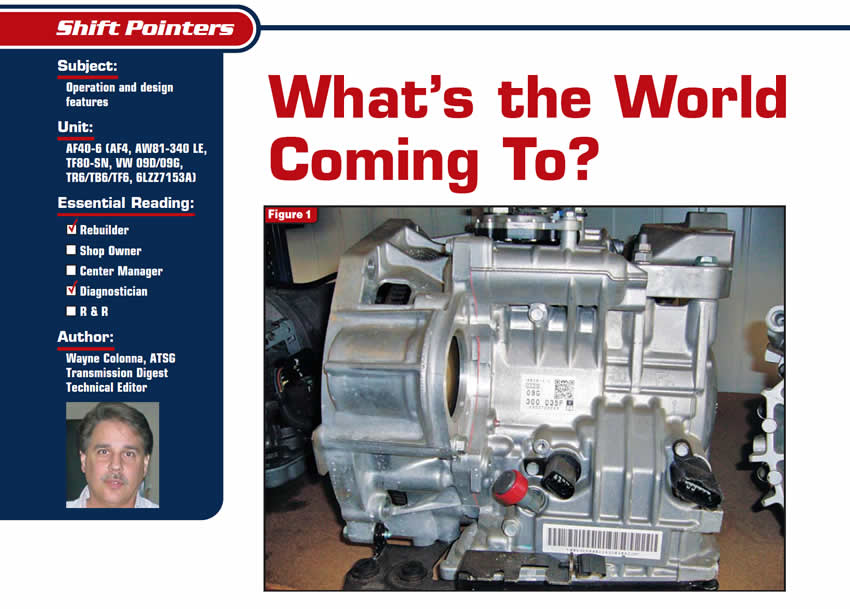
Shift Pointers
- Subject: Operation and design features
- Unit: AF40-6 (AF4, AW81-340 LE, TF80-SN, VW 09D/09G, TR6/TB6/TF6, 6LZZ7153A)
- Essential Reading: Rebuilder, Diagnostician
- Author: Wayne Colonna, ATSG, Transmission Digest Technical Editor
You may be familiar with a transmission called the JF506E, which in the North American market can be found in the VW Jetta, Golf and GTI; the Mazda 6 and MPV; the Jaguar X Type; and the Land Rover Freelander. It is manufactured by Japanese Automatic Transmission Co. (JATCO). In Europe the JF506E is in vehicles such as the VW Golf and Sharan, the Land Rover Freelander, the Jaguar X Type and the Ford Mondeo, to name a few. And the company said something to this effect: “You build the car and we will make this transmission fit it. The transmission will be versatile enough to accept programming of the computer to meet various strategies desired by the car manufacturer using the transmission.”
A competitor of JATCO, Aisin Seiki, has stepped in and has taken a large percentage of the market with its six-speed front-wheel-drive transmission, particularly in Europe (rumor has it that Aisin may buy out or has bought out JATCO – seems like a trend these days). Anyway, this six-speed transmission comes in different sizes and configurations, as it is being used in a vast variety of car models. It has taken the meaning of “You build the car and we will make this transmission fit it” to a whole new level.
Here is what I mean: In the European market the Aisin Seiki six-speed is being used in GM, Volvo, Ford, Mazda, Jaguar, Opel, Saab, Citroen, Fiat, Lancia, Peugeot, Nissan, Renault, Audi and VW. As a result, this transmission can go by any of these names: AF40-6, AF4, AW81-340 LE, TF80-SN, VW 09D, VW 09G, TR6, TB6, TF6 or 6LZZ7153A. No wonder we have technicians calling our hotline not knowing the name of the transmission they are working on! For the U.S. market this transmission is used in late-model vehicles such as the Audi A3, A4 and TT; VW Golf, GTI, Jetta, New Beetle and Passat; Mazda 6S; Ford Five Hundred and Fusion; Lincoln Zephyr; and Mercury Milan and Montego. It is called the 09G, AWTF60SN or AF21-B.
Figure 1 shows the unit found in Audi and VW. Notice that it has a bottom pan. Figure 2 shows the version used in Ford, Mercury and Lincoln vehicles. Notice that it has a side pan.
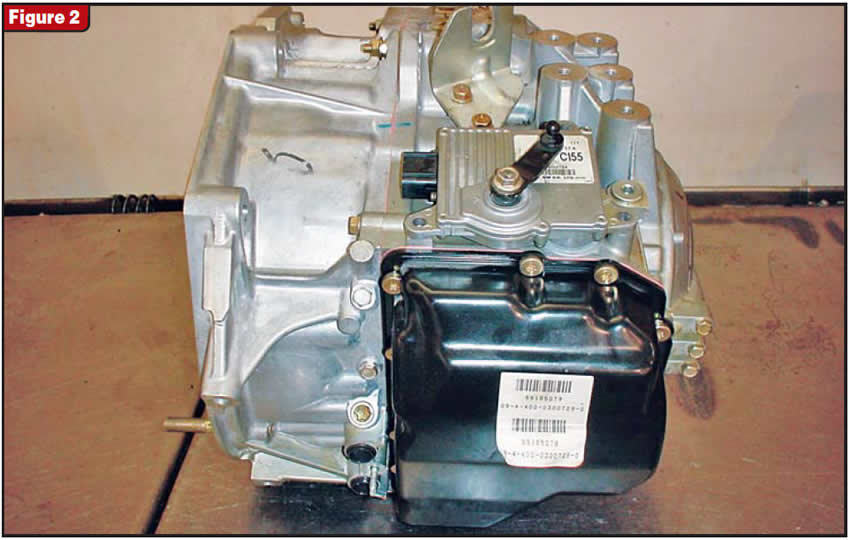
Figure 3 shows the Audi/VW valve body removed from the case, and Figure 4 shows the Ford unit with the pan removed. This is an example of “You build the car and we will make this transmission fit it.”
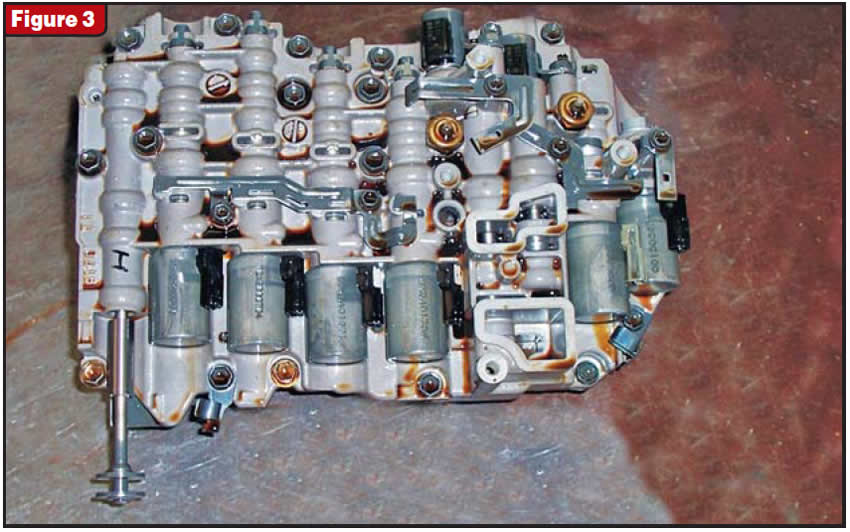
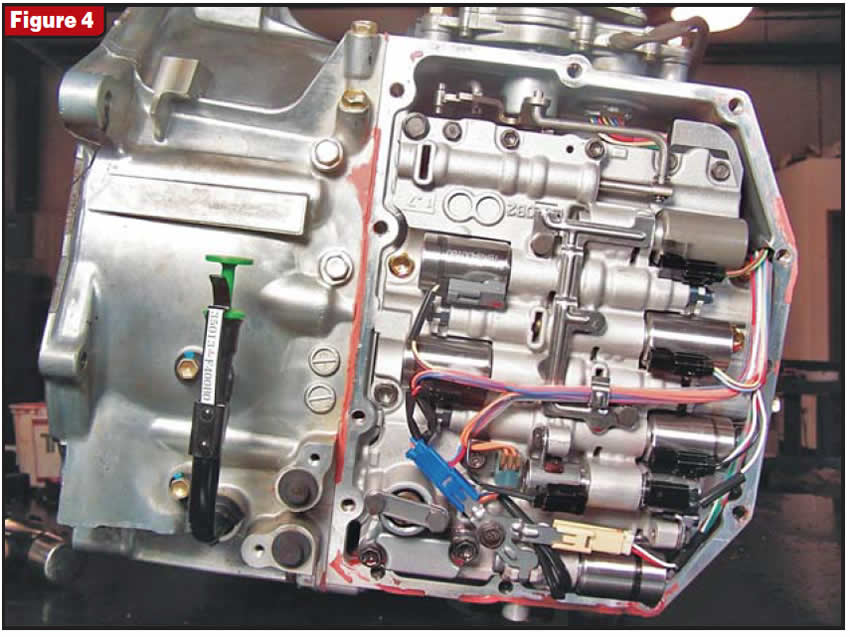
Besides having the valve body on the bottom as opposed to the side, the Audi/VW unit does not use a band (B1) while Ford does, yet the geartrain design of the C1, C2, C3 and B2 including the pump is similar and functions the same (see figures 5 through 8).
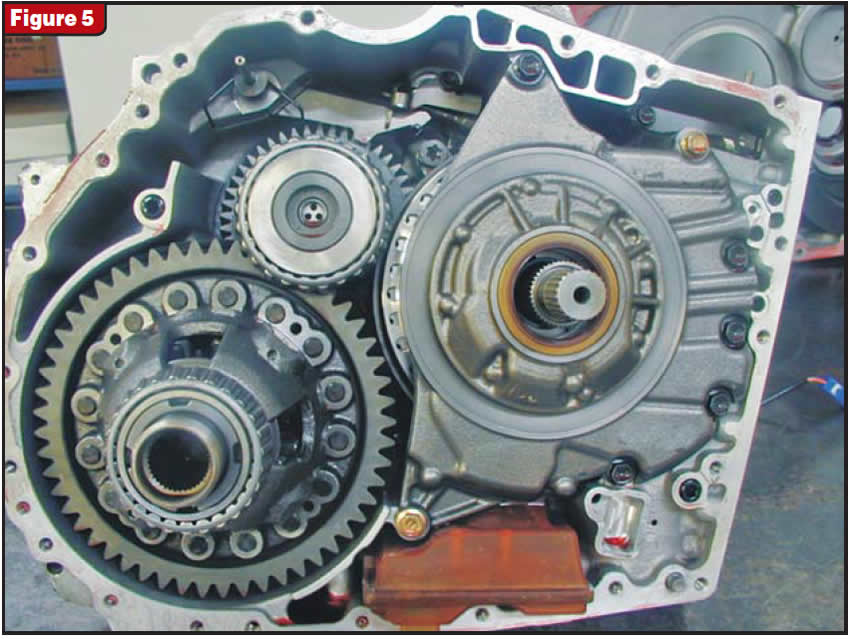
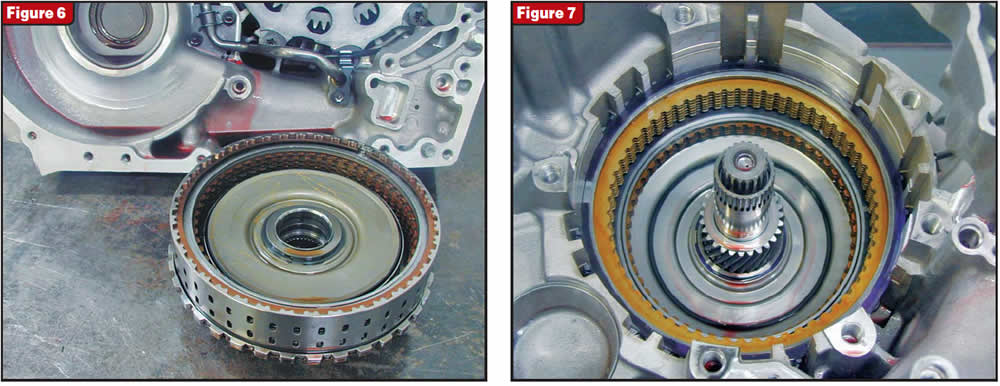
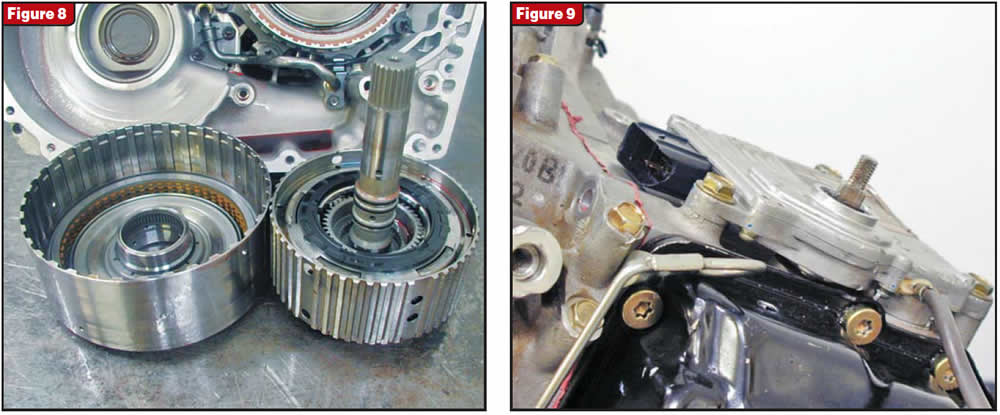
On top of these transaxles you will find what looks like a transmission-range sensor (see Figure 9), and in one sense it is – but not in its entirety. This is also the transmission control module. Built inside the TCM is the transmission-range sensor.
Some models may have what appears to be an unused pigtail connector attached to it as shown in Figure 10. This is for connection of a dedicated factory scan tool. Communication to the TCM will otherwise be accessed through the network from the typical diagnostic link. The main connector on the TCM is known as connector A, to which a vehicle harness is connected. Contained in this connector are wires for the controller-area network (CAN), power, ground, tip-up and tip-down signals, and park-lock signal.
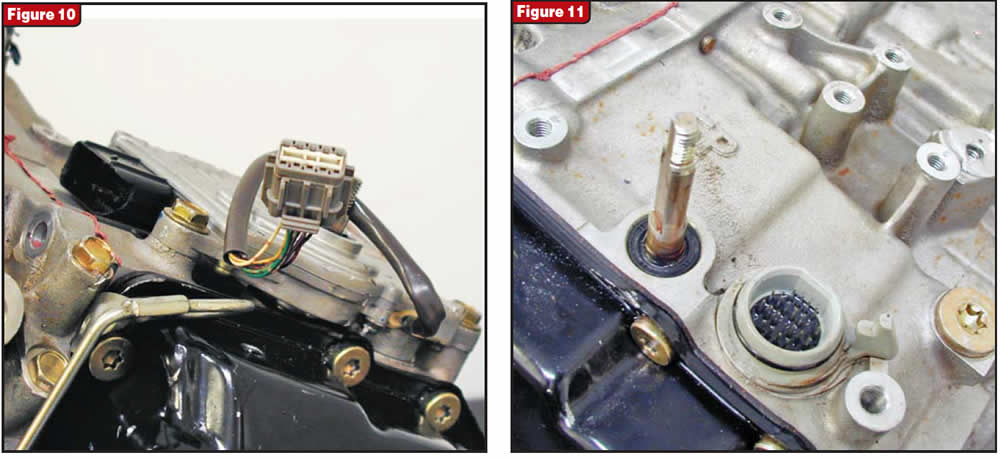
When the TCM is removed from the transmission you will see that it plugs into a round 22-pin connector called connector B(see Figure 11). I have provided a chart in Figure 12 that identifies these connectors along with their individual pin assignments. It is through connector B that solenoid resistance checks can be made (see the chart in Figure 13) and the TCM controls the solenoids. So if the vehicle produces one or more solenoid-circuit-error codes, either the solenoid(s) or internal wiring harness has failed or the TCM is defective. If a code is produced for a malfunctioning gear-select switch, the TCM will need to be replaced to correct this condition.
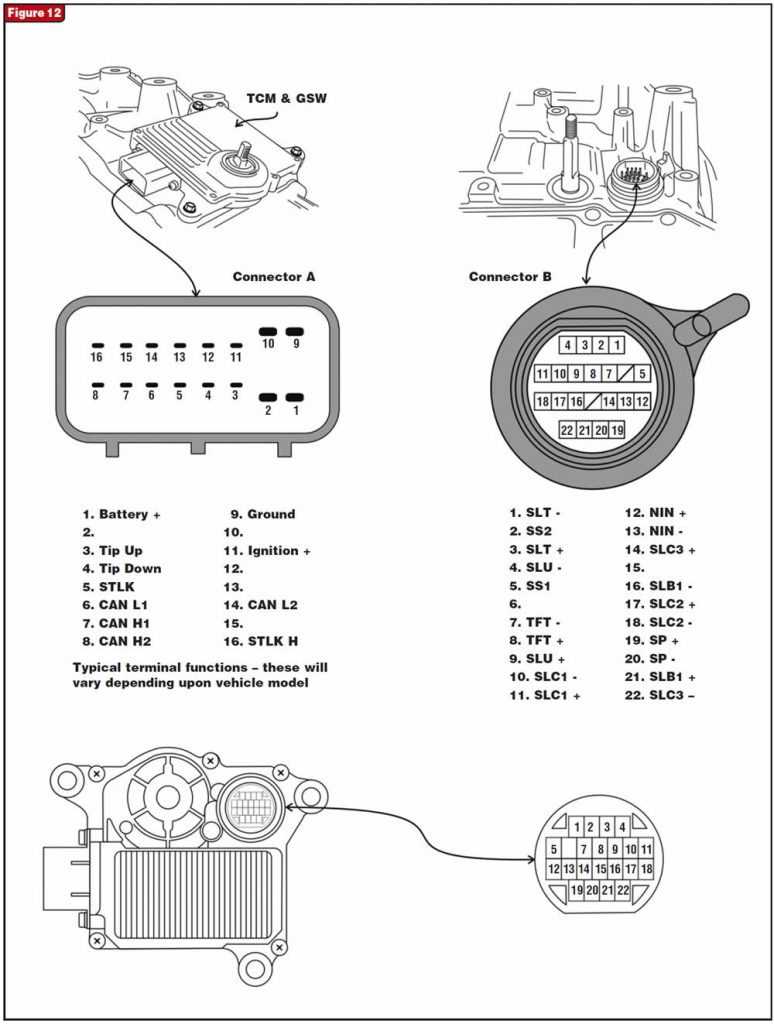
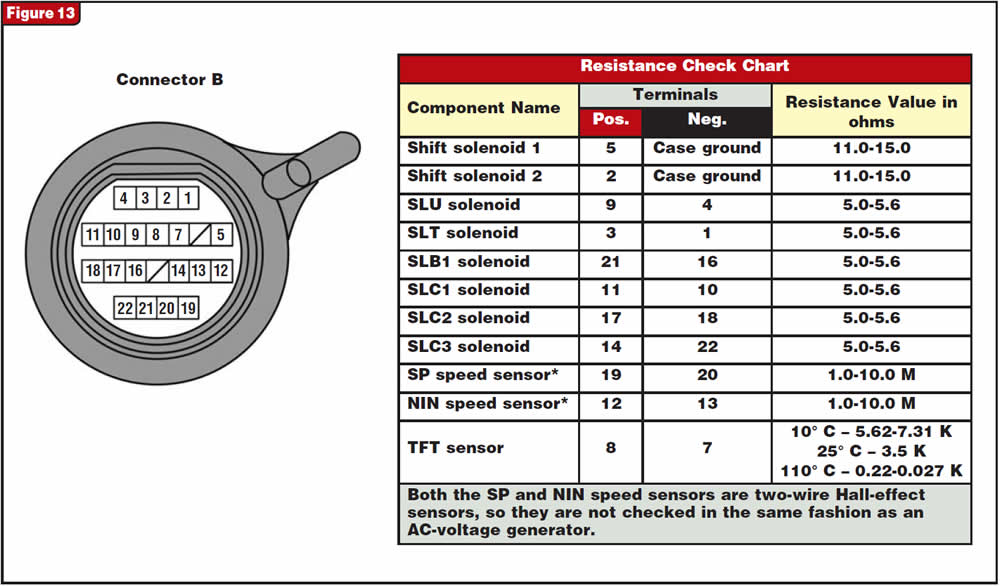
When you place the TCM back onto the transmission, it is imperative that the TCM/gear-select switch align properly in the neutral position. An identification mark on the manual-arm shaft must line up with an arrow on the TCM casing when the shaft is in the neutral position (see Figure 14).

There is still more to talk about with this widely used and varied-design transmission, and we will do so in future articles. So what’s the world coming to? It appears to be company mergers and buyouts and transmission designs that require less rebuilding and more unit replacement parts. By the way, did I hear correctly on the news that GM and Ford had talks about merging?














